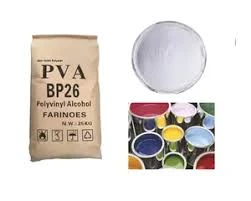The Versatility of Methylcellulose and Hydroxypropyl Methylcellulose in Various Industries
Methylcellulose (MC) and Hydroxypropyl Methylcellulose (HPMC) are cellulose derivatives that have gained significant attention in various industries due to their unique properties. Both of these compounds are non-ionic, water-soluble polysaccharides derived from natural cellulose, making them versatile and environmentally friendly. They are commonly used as thickening agents, emulsifiers, and film-formers, contributing to a wide range of applications in food, pharmaceuticals, cosmetics, and construction.
Food Industry Applications
In the food industry, methylcellulose is widely recognized for its ability to provide texture and stability. It is commonly used as a thickener in sauces, dressings, and dairy products. Methylcellulose’s unique property of forming a gel when heated and reverting to a liquid upon cooling makes it particularly valuable for creating products that require a smooth texture while maintaining viscosity, such as gluten-free baked goods.
Hydroxypropyl Methylcellulose enhances this versatility, acting as an emulsifier and stabilizer. It contributes to preventing separation in emulsified products, helping maintain a consistent and pleasing texture. Both MC and HPMC are considered safe food additives and are often used in dietary formulations, including low-calorie and gluten-free products, appealing to health-conscious consumers.
Pharmaceuticals and Healthcare
The pharmaceutical industry heavily utilizes HPMC in the formulation of oral medications, particularly in the development of extended-release drug formulations. HPMC aids in controlling the release of active pharmaceutical ingredients, allowing for a more prolonged therapeutic effect and minimizing the need for frequent dosing. Its water-retaining properties make it an excellent choice for use in hydrogels for drug delivery and tissue engineering applications, facilitating the effective transport of drugs to targeted sites in the body.
Additionally, methylcellulose offers excellent compatibility with various excipients and active pharmaceutical ingredients, making it a popular choice in tablet formulations. The ability to form films also allows for the creation of controlled-release coatings, providing further opportunities for innovation in drug delivery technologies.
mecellose hpmc

Cosmetic and Personal Care Products
In the cosmetics and personal care industry, HPMC and MC are valued for their thickening, binding, and film-forming capabilities. They are commonly found in lotions, creams, shampoos, and other cosmetic formulations. Their ability to improve the viscosity of products ensures a luxurious and smooth application, enhancing customer satisfaction.
Moreover, these cellulose derivatives are often employed in gel products, acting as effective stabilizers that prevent separation and improve product longevity. Their mildness and compatibility with skin further enhance their desirability in formulating personal care products.
Construction Industry Applications
Beyond food and pharmaceuticals, methylcellulose and hydroxypropyl methylcellulose have found their way into the construction industry. They are frequently used as additives in cement-based products, enhancing workability and water retention. These properties are crucial in plastering and tiling applications, where the right consistency is essential for achieving high adhesion and durability.
HPMC also aids in preventing sagging during application, providing improved performance in construction materials. Its versatility allows it to be utilized in various building applications, contributing to the efficiency and longevity of construction projects.
Conclusion
Methylcellulose and Hydroxypropyl Methylcellulose are essential components in a multitude of industries, showcasing their remarkable versatility. Their ability to improve texture, stability, and performance makes them invaluable in food products, pharmaceuticals, cosmetics, and construction materials. As advancements in technology continue to emerge, the applications for MC and HPMC will likely expand, further underscoring their significance in modern manufacturing and product development. This adaptability not only highlights the importance of these compounds but also their potential in contributing to innovative solutions across various sectors.
-
Rdp Powder: Key Considerations for Wholesalers in the Building Materials IndustryNewsJul.08,2025
-
Key Considerations for Wholesalers: Navigating the World of Hpmc - Based ProductsNewsJul.08,2025
-
Hpmc Detergent: Key Considerations for WholesalersNewsJul.08,2025
-
Key Considerations for Wholesalers: China Hpmc For Tile Adhesive, Coating Additives, Concrete Additives, and MoreNewsJul.08,2025
-
Crucial Considerations for Wholesalers: Navigating the World of Construction MaterialsNewsJul.08,2025
-
Key Considerations for Wholesalers Sourcing Additive For Cement, Additive For Concrete, Additive For Putty from Additive Manufacturer Shijiazhuang Gaocheng District Yongfeng Cellulose Co., Ltd.NewsJul.08,2025




